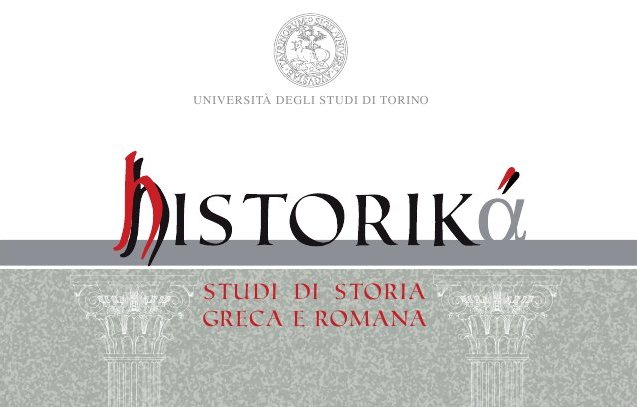Immaginario del mare e homonoia. Luoghi reali e virtuali dell’armonia e dell’amicizia nella retorica politica e nella prassi (IV sec. a.C.)
DOI:
https://doi.org/10.13135/2039-4985/1907Abstract
Concord is order, harmony, balance, it is a moral principle that inspires pacific coexistence within the civic community; this is the image delivered by IV century philosophical and political thought. Such a notion was developed within a speculation over spaces and places considered in their faculty of producing or hindering the establishment of a condition of ὁμονοεῖν. In the IV century cultural horizon the sea figured both as the space of inequality, violence and power struggle, as opposed to the earth that produced concord and relations of friendship, and also as a vehicle of ideas that associated freedom and concord, a bulwark for democracy. Athens’s action on the sea was just as much a model for both the positive and negative notion. Gorgias and Lysias can be considered the first authors to provide evidence of these contrasting representations.
Under another perspective, the sea was the space of mercantile activities and the Aegean harbours functioned as privileged places of an operational concord born from the meeting and association of diverse people, united by their work experiences and economic interests by which social integration prevailed over political distinctions. The diffusion of the cult of Homonoia at Piraeus, epigraphically attested since the IV century B.C., and its fortune among the communities of thiasotai testifies its correlation with mercantile society and its establishment among the multiethnic population of the Athenian port. The devotion of citizens and foreigners, free and slaves, men and women, answered the need for a cult to be shared by people of most diverse provenance, heterogeneous social extraction and of different religious traditions, offering thus a model of homonoia that went beyond the bounds of the civic community to be declined according to the criteria of cosmopolitism and integration.
Downloads
Published
Issue
Section
License
The authors who publish in this magazine accept the following conditions:
a) The authors retain the rights to their work and assign the right of first publication of the work to the magazine, simultaneously licensed under a Creative Commons License - Attribution that allows others to share the work indicating intellectual authorship and the first publication in this magazine.
b) Authors may adhere to other non-exclusive license agreements for the distribution of the version of the published work (e.g. deposit it in an institutional archive or publish it in a monograph), provided that the first publication has taken place in this magazine.


 The journal has been approved for inclusion in DOAJ. The DOAJ listing of the journal is available at
The journal has been approved for inclusion in DOAJ. The DOAJ listing of the journal is available at 

